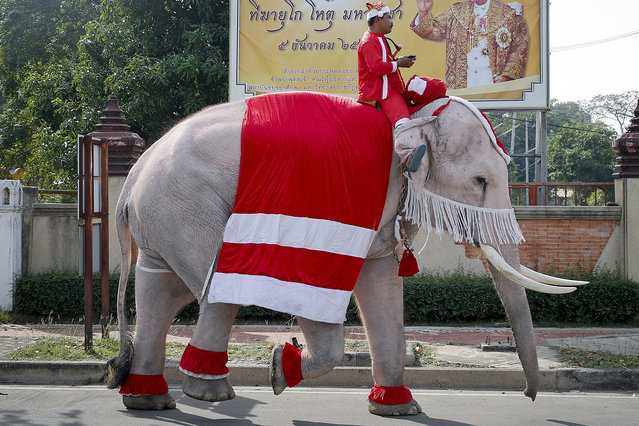
A Thai mahout and his elephant, both dressed as Santa Claus pass in font of a large photograph of Thai King Bhumibol Adulyadej following a Christmas event at a school in the world heritage city of Ayutthaya, north of Bangkok, Thailand, 24 December 2015. The annual event is held to celebrate the Christmas season in the overwhelmingly Buddhist kingdom. (Photo by Diego Azubel/EPA)
26 Dec 2015 08:04:00,post received
0 comments







